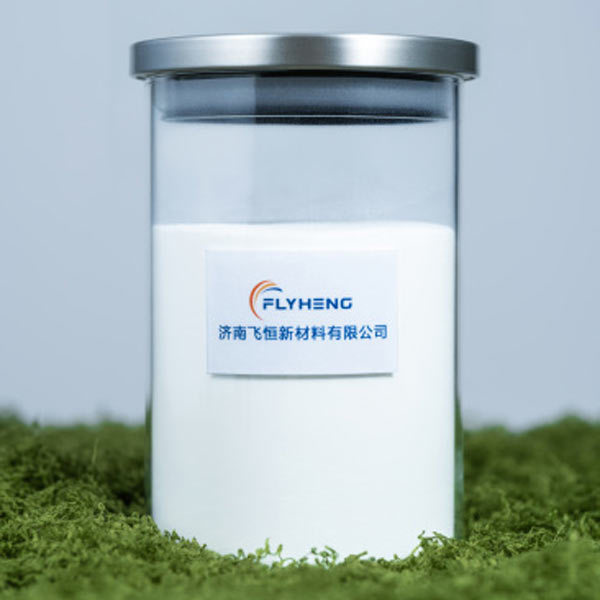Unlocking the Benefits of AC Foaming Agents in Modern Chemical Applications
Release time: 2025-07-09
Unlocking the Benefits of AC Foaming Agents in Modern Chemical Applications
Table of Contents
- Introduction to AC Foaming Agents
- What Are AC Foaming Agents?
- Benefits of AC Foaming Agents in Chemical Applications
- Applications of AC Foaming Agents in Various Industries
- Mechanism of Action: How AC Foaming Agents Work
- Environmental Impact and Sustainability of AC Foaming Agents
- Future Trends in AC Foaming Agent Development
- Frequently Asked Questions
- Conclusion
Introduction to AC Foaming Agents
In the ever-evolving landscape of the chemical industry, AC foaming agents stand out for their remarkable ability to enhance product performance across various applications. These agents, primarily composed of surfactants, are pivotal in generating and stabilizing foam, making them invaluable in multiple sectors, from construction to personal care. This article explores the myriad benefits and applications of AC foaming agents, shedding light on their significance in today’s chemical landscape.
What Are AC Foaming Agents?
AC foaming agents, or **air-entraining agents**, are specialized surfactants designed to produce stable foam when mixed with liquids. They are widely utilized in numerous formulations, including **concrete**, **plastics**, and **cosmetics**. By reducing the surface tension of water, these agents facilitate air incorporation, resulting in a lightweight structure with improved thermal and acoustic properties.
Composition of AC Foaming Agents
These agents typically consist of a blend of **anionic**, **nonionic**, and **cationic surfactants** that work synergistically to achieve optimal foaming properties. The choice of surfactants affects the foaming stability, density, and application efficiency, allowing formulators to tailor products to specific requirements.
Benefits of AC Foaming Agents in Chemical Applications
The integration of AC foaming agents into chemical formulations presents numerous advantages. Here are some of the most compelling benefits:
1. Enhanced Material Properties
AC foaming agents significantly improve the **mechanical properties** of materials, contributing to enhanced strength-to-weight ratios. This is especially beneficial in construction materials, where lighter, stronger components can lead to cost-effective building solutions.
2. Improved Thermal Insulation
In applications such as insulative foams, AC foaming agents help create a closed-cell structure that offers superior thermal insulation. This characteristic is vital for energy-efficient building materials, drastically reducing heating and cooling costs.
3. Lightweight Solutions for Various Industries
By reducing the density of final products, AC foaming agents allow manufacturers to create lightweight alternatives without compromising performance. This advantage is crucial in industries such as **automotive** and **aerospace**, where weight savings can lead to significant efficiency gains.
4. Aesthetic and Functional Attributes in Consumer Products
In personal care and cosmetic products, AC foaming agents contribute to the sensory experience by generating rich, creamy lathers. This enhances the consumer appeal of shampoos, body washes, and other cleansing products.
5. Cost Efficiency in Production
The incorporation of AC foaming agents can lead to reduced raw material usage in formulations. Lighter products require less shipping and handling costs, providing a significant economic advantage for manufacturers.
Applications of AC Foaming Agents in Various Industries
The versatility of AC foaming agents allows their application across a broad spectrum of industries:
1. Construction and Building Materials
In the construction sector, AC foaming agents are integral to creating **lightweight concrete** and **insulation panels**. Their ability to entrain air improves workability and reduces weight, making construction processes more efficient.
2. Food Industry
In food products, AC foaming agents are used to achieve desired textures and mouthfeel. They play a critical role in producing whipped toppings, mousse, and certain dairy products, enhancing both appearance and taste.
3. Personal Care Products
The cosmetic industry employs AC foaming agents in formulations to create luxurious foams in shampoos, shower gels, and shaving creams. These agents enhance the effectiveness of cleansing while providing a pleasant user experience.
4. Automotive and Aerospace
In the automotive and aerospace industries, AC foaming agents contribute to the production of lightweight composites and insulation materials that meet stringent performance standards. Their properties enable the creation of parts that improve fuel efficiency and reduce emissions.
5. Packaging Solutions
AC foaming agents are also used in the production of **foamed packaging materials**, providing cushioning and protection for sensitive products. This application is crucial in reducing plastic waste and enhancing sustainability in packaging.
Mechanism of Action: How AC Foaming Agents Work
Understanding the mechanism of action of AC foaming agents is essential for optimizing their use in various formulations. These agents work by lowering the **surface tension** of the liquid, allowing air to be trapped within the liquid matrix.
Foam Stability
The stability of the foam is primarily influenced by the **viscosity** of the liquid and the properties of the surfactants used. The right balance ensures prolonged foam life, which is crucial in applications requiring sustained performance.
Factors Affecting Foam Formation
Several factors, including temperature, concentration, and mixing speed, can influence the effectiveness of AC foaming agents. Formulators must consider these variables to achieve optimal results for their specific applications.
Environmental Impact and Sustainability of AC Foaming Agents
As industries increasingly focus on sustainability, the environmental impact of AC foaming agents becomes a critical consideration.
Biodegradability and Safety
Many modern AC foaming agents are designed to be biodegradable, minimizing their ecological footprint. Additionally, advancements in formulation technology have led to the development of safer surfactants that comply with environmental regulations.
Sustainable Manufacturing Practices
The production of AC foaming agents is evolving towards more sustainable practices, including the use of renewable raw materials and energy-efficient manufacturing processes. These changes help reduce waste and energy consumption throughout the supply chain.
Future Trends in AC Foaming Agent Development
The landscape of AC foaming agents is set to evolve significantly in the coming years. Emerging trends include:
1. Advancements in Formulation Technology
New developments in formulation technology are expected to enhance the performance and applicability of AC foaming agents. These innovations may lead to more effective products with greater versatility across industries.
2. Focus on Sustainability
As environmental concerns continue to rise, the demand for sustainable products will drive innovation in the formulation of AC foaming agents. Expect to see a shift towards bio-based surfactants and eco-friendly manufacturing processes.
3. Integration of Smart Technologies
The integration of smart technologies, such as AI and machine learning, will facilitate the development of tailored foaming agents that meet specific performance criteria. This advancement will enhance product efficiency and effectiveness in various applications.
Frequently Asked Questions
1. What are AC foaming agents used for?
AC foaming agents are primarily used to create stable foams in various applications such as construction materials, personal care products, and food processing. They enhance the performance and aesthetic qualities of these products.
2. Are AC foaming agents environmentally friendly?
Many modern AC foaming agents are designed to be biodegradable and safe, aligning with sustainability goals within the industry. It is crucial to choose products that comply with environmental regulations.
3. How do AC foaming agents improve insulation properties?
By creating a closed-cell foam structure, AC foaming agents significantly enhance thermal insulation. This makes them ideal for applications in energy-efficient building materials and insulation products.
4. Can AC foaming agents be used in food products?
Yes, AC foaming agents are commonly utilized in the food industry to improve texture and mouthfeel in products such as whipped toppings and mousses.
5. What factors influence the effectiveness of AC foaming agents?
The effectiveness of AC foaming agents can be influenced by factors such as concentration, temperature, mixing speed, and the specific formulation of surfactants used.
Conclusion
AC foaming agents play an indispensable role in modern chemical applications, offering a wide array of benefits across various industries. Their ability to enhance material properties, improve sustainability, and create consumer-friendly products makes them essential in today's market. As we look to the future, advancements in formulation technology and a focus on environmental responsibility will shape the next generation of AC foaming agents. Embracing these innovations will ensure that industries can meet evolving demands while maintaining a commitment to sustainability and performance excellence.
 sales@feihengchem.com
sales@feihengchem.com
 +8615665855919
+8615665855919 中文
中文 English
English España
España











